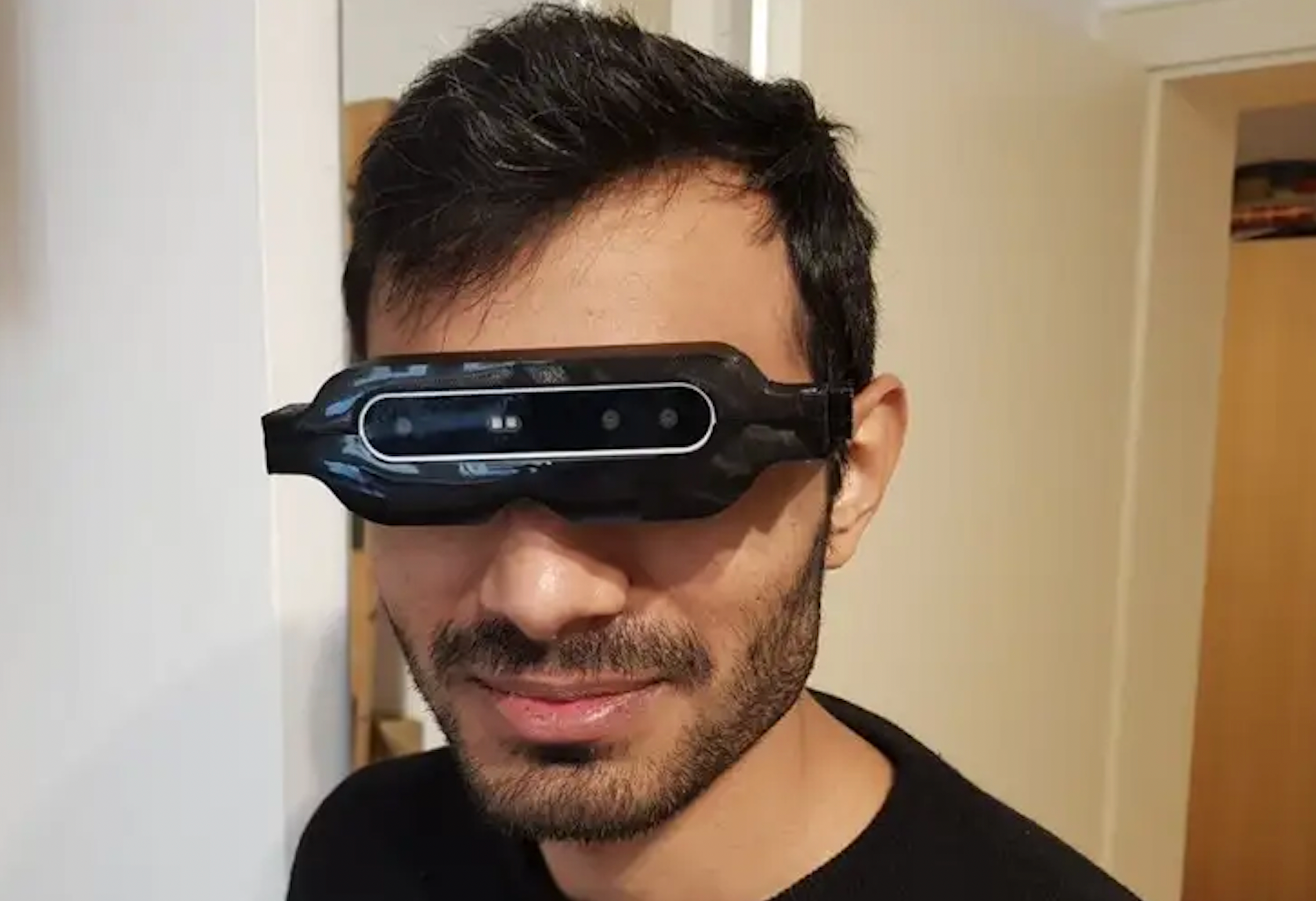Scientists build new device that may help people who are blind ‘see’ in infrared
Infrared goggles can even help wearers navigate in darkness, say researchers

A new device that can help blind people navigate and avoid obstacles was developed by scientists using infrared goggles and an array of vibrating pads on the forearm.
Unlike canes and many other tools commonly available to visually impaired people for navigation, the new device enables the full use of their hands, according to a yet-to-be peer-reviewed study on the device that was posted in the preprint repository arXiv this month.
“The most common tool available to them is the cane. Although the cane allows good detection of objects in the user’s immediate vicinity, it lacks the ability to detect obstacles further away,” researchers Manuel Zahn and Armaghan Ahmad Khan from the Technical University of Munich in Germany wrote in the study.
The new device also does not interfere with the user’s sense of hearing – which is extensively used by the visually impaired – according to the scientists.
It uses a pair of infrared cameras inserted in 3D-printed prototype goggles to capture a stereoscopic image that a small computer uses to create a map of the surrounding area.
Distance information from the camera is mapped onto a 2D vibration array on a haptic feedback sleeve on the forearm which communicates the information to the wearer as sensations of touch, the study explained.
The sleeve has 25 actuators in a grid that vibrate to help users understand how close objects are and how they’re oriented, aiding the wearers in navigation.
As users move closer towards an obstacle, the vibrations on the sleeve gradually increase, warning them of hurdles ahead.
“A narrow hallway will, thus, generate strong vibrations on each side of the sleeve and the intensity of these vibrations reduces when moving to the centre of the array,” the scientists explained.
Since the goggles use infrared, researchers said it can even help wearers navigate in darkness.
Volunteers in testing could accurately navigate up to 98 per cent accuracy using the device, according to the scientists.
“All users were able to complete the task and showed performance improvement over multiple runs,” the study noted.
The researchers added that the volunteers could also complete indoor navigation tasks in darkness, with their time of completion improving over three runs.
In further developments, they hope to implement object recognition that could help artificially generate bordered paths for navigation.
“The obstacle avoidance system demonstrates a promising approach towards using technology to enable more independence for the visually impaired,” the researchers concluded.
Join our commenting forum
Join thought-provoking conversations, follow other Independent readers and see their replies
Comments
Bookmark popover
Removed from bookmarks